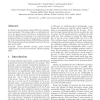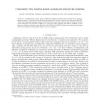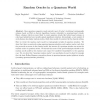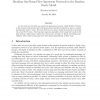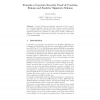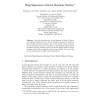JOC
2007
14 years 7 months ago
2007
Signcryption is a public key or asymmetric cryptographic method that provides simultaneously both message confidentiality and unforgeability at a lower computational and communica...
SCN
2008
Springer
14 years 7 months ago
2008
Springer
We present an implementation of the protocol of Lindell and Pinkas for secure two-party computation which is secure against malicious adversaries [13]. This is the first running sy...
IJNSEC
2008
14 years 7 months ago
2008
A scheme for general group oriented ID-based cryptosystems is proposed. This scheme allows an authorized subset in the general access structure to cooperatively decrypt the cipher...
DCC
2010
IEEE
14 years 7 months ago
2010
IEEE
In 2003, Boneh, Gentry, Lynn and Shacham (BGLS) devised the first provably-secure aggregate signature scheme. Their scheme uses bilinear pairings and their security proof is in the...
CORR
2010
Springer
14 years 7 months ago
2010
Springer
Once quantum computers reach maturity most of today's traditional cryptographic schemes based on RSA or discrete logarithms become vulnerable to quantum-based attacks. Hence, ...
CORR
2008
Springer
14 years 7 months ago
2008
Springer
In this work we deal with one-round key-agreement protocols, called Merkle's Puzzles, in the random oracle model, where the players Alice and Bob are allowed to query a rando...
WEWORC
2007
14 years 8 months ago
2007
Abstract. Courtois, Finiasz and Sendrier proposed in 2001 a practical code-based signature scheme. We give a rigorous security analysis of a modified version of this scheme in the...
CCS
2008
ACM
14 years 9 months ago
2008
ACM
In 1998, Blaze, Bleumer, and Strauss suggested a cryptographic primitive termed proxy re-signature in which a proxy transforms a signature computed under Alice's secret key in...
ASIACRYPT
2000
Springer
14 years 11 months ago
2000
Springer
A conference key protocol allows a group of participants to establish a secret communication (conference) key so that all their communications thereafter are protected by the key. ...
CCS
2006
ACM
14 years 11 months ago
2006
ACM
Since the formalization of ring signature by Rivest, Shamir and Tauman in 2001, there are lots of variations appeared in the literature. Almost all of the variations rely on the ra...

